Pressure cookers facilitate sous vide, or cooking food in its own juices. Because the results are delicious, there is a massive market for these appliances. Whether prepping food for small or large families, customers love the convenience of electric or stove-top kitchen appliances, giving retailers good reason to stock these products. Stay with us as we explore how global sales are increasing and all the features that make pressure cookers a firm favorite in homes across the world.
Table of Contents
Impressive global sales forecast
Pressure cooker features
Stocking up on pressure cookers
Impressive global sales forecast
Driven by energy efficiency, innovation, government initiatives, timesaving demands, and social support online, the pressure cooker market continues to evolve. This evolution is partly due to these forces influencing manufacturer designs to keep up with environmental indicators. Consequently, the global market value of USD 4.9 billion in 2022 is estimated to increase at a compound annual growth rate (CAGR) of 7.2% to USD 9.16 billion by 2030.
Additional data
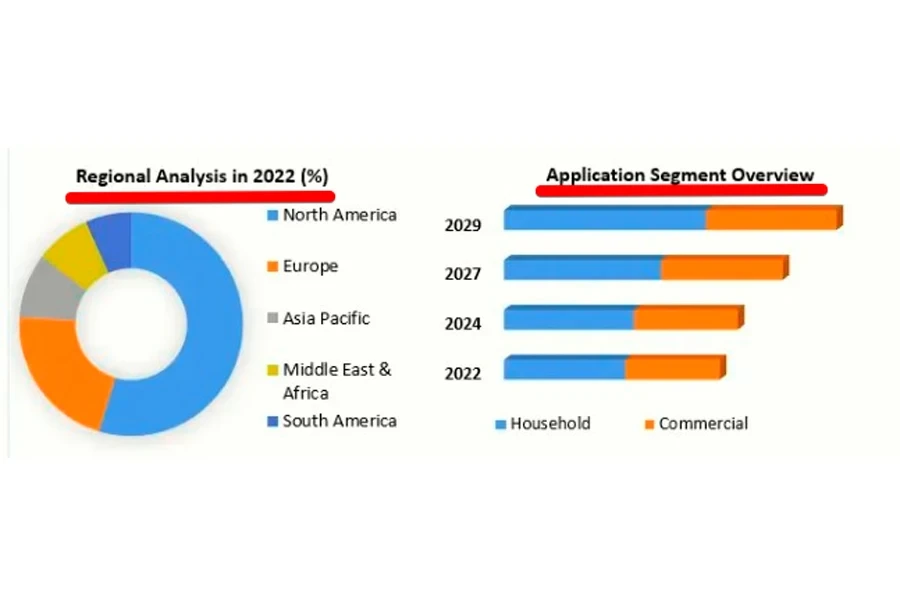
Other data from pressure cooker forecasts include:
- Sales by country and sector as shown in the graphic above.
- While the Chinese, Indian, and other Asian markets are strong, the United States, Canadian, and South American markets are predicted to grow the fastest up to 2030.
- Stainless steel pressure cookers attracted a 64% market share in 2021.
- A high 8.5% CAGR for aluminum products is predicted from 2022 to 2028.
- Sales of 1L to 2L cookers in Europe are set to dominate due to the increase in single-person living arrangements.
- 2L to 5L (slightly less than quarts) pressure cooker capacities will dominate other markets where 3 to 5-member families are prevalent, with the global average being 4 people.
- Single-purpose cookers have traditionally dominated global sales. However, smart appliance sales are slowly seeing an upward trend, indicating the steady growth of multipurpose pressure cookers in the next few years.
Google Ads
Google Ads keyword searches for “pressure cookers” rose marginally from 27,100 in July 2023 to 33,100 in December 2023, an increase of 18.12%. Searches for “electric pressure cookers” rose from 27,100 to 40,500 in the same period, reflecting an increase of 33.08%. In contrast, Google Ads shows that searches for “multicooker” were 49,500 in July, rising to 110,000 in December, a positive change of 55%. But the searches for ‘instant pot’ skyrocketed from 673,000 to 1,000,000 in the same timeframe, an increase of 32.7%, proving how powerful keywords can be in making products more discoverable online.
Pressure cooker features
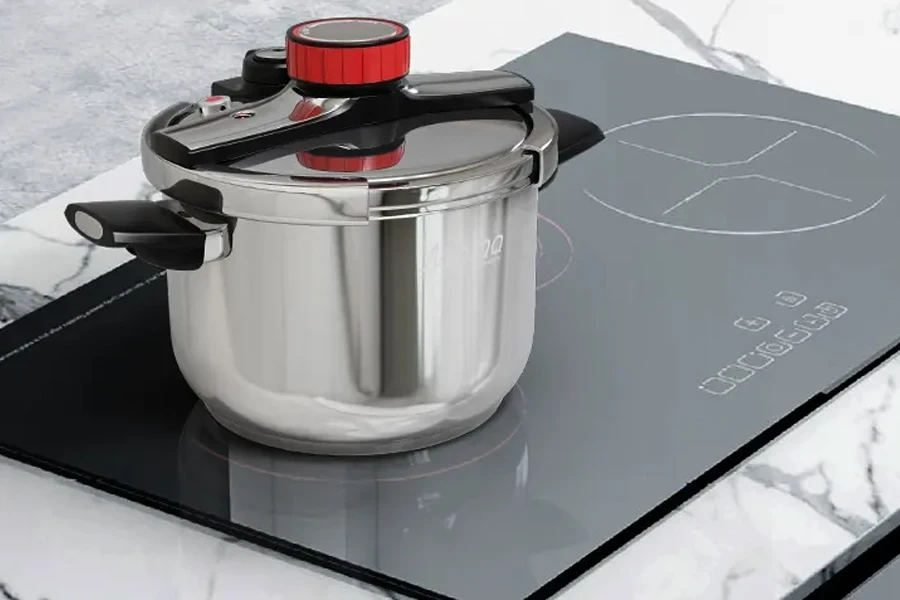
Two basic types
Pressure cookers were initially made for stovetop use before evolving into electric kitchen appliances. These models are powerful and cook food rapidly because their heat and pressure typically increase faster than electric pressure cookers. These appliances are also better suited for advanced cooking techniques, such as canning, because of their features. Stove-top models also tend to last for generations rather than years, like electric cookers.
The electric pressure cooker is sometimes known as an instant pot, a multicooker, or even a speed cooker. Whatever name they have, these models take longer to reach higher temperatures and pressure levels than their stovetop counterparts. Newer models are less durable than the original types, too, but they often have more accessories and settings for multipurpose cooking techniques, such as slow cooking, steaming, and baking. Whichever model retailers choose for their customers, the cooking process is faster and uses less power, increasing customer value.
Pressure cooker features/benefits

Pressure valves: Older models should have a quick-release valve on the lid to reduce internal pressure for safety when necessary.Alternatively,stovetop pressure cookers should have a spring valve if they are the non-venting type, whereas electric products should feature a float valve. Spring valves replace older piston-type valves on stovetop cookers, preventing the constant release of stem and hissing sounds. Otherwise, the float valveon electric models is also quiet and saves energy. This technology has nothing to do with pressure release on electrical products, which is regulated by the on/off function of the heating element.
Pressure settings: At least two settings for cooking meat and other protein-dense foods on high are necessary, while a low setting for fish, vegetables, pasta, and similar foods is a basic requirement when choosing these kitchen appliances. Some product pressure settings are on the lid, while others have digital displays.
Cover-locking/pressure indicator safety features: If the lid is not properly secured on the cooker, it should have a feature that prevents pressure from developing. Additionally, a gauge or system must be present to prevent the removal of the lid if the contents are pressurized.
Accessories: Additional accessories like instruction manuals, cooking tools, steam baskets, dividers, racks, recipe books, and so on often increase the product’s value and sales.
Easy maintenance: Products that are easy to clean and dishwasher-safe check valuable benefit boxes for customers.
Parts: Readily available parts across countries add to customer value.
Multipurpose

Electric pressure cookers have more settings than stovetop versions. The automatic settings simplify cooking for many customers, with set and leave functions ensuring easy meal preparation. Likewise, the set-and-forget functions on digital models mean that customers can use electric pressure cookers as rice and slow cookers, bake, make yogurt, and keep food warm. Moreover, the timer delay settings ensure meals are ready when users get home.
Materials
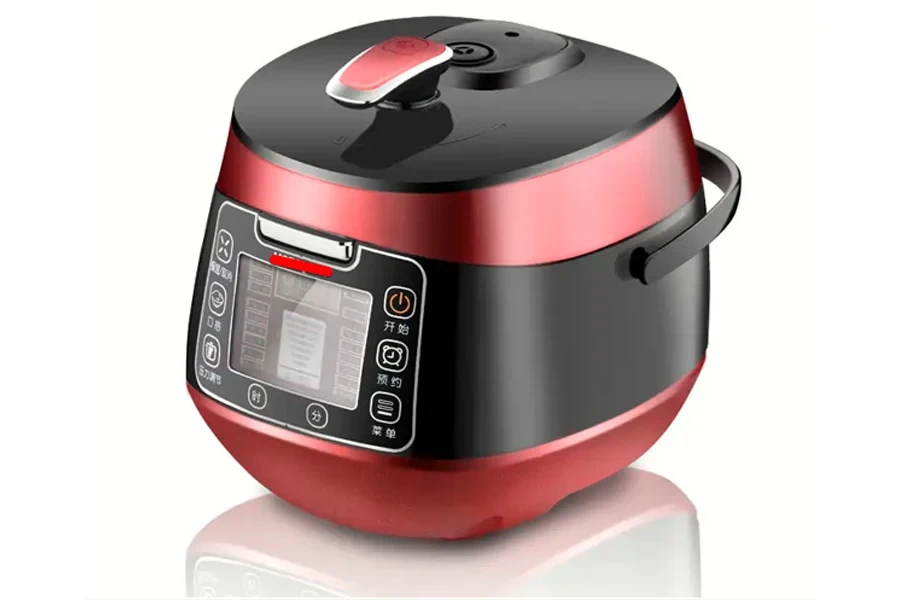
Aluminum: Products made from this material are popular because they cost less than stainless steel appliances. The drawback of these cookers is that the aluminum leaches into food, changing its flavor and posing a health hazard over time. Aluminum is also soft, making it prone to losing its form when exposed to high heat.
Non-stick coatings: These coatings often contain perfluoroalkylated and polyfluoroalkylated (PFAS), known as forever chemicals, that leach into food over time, posing a health hazard. Retailers should note that PFAS alternatives might be just as hazardous as GenX. These coatings tend to degrade quickly from scratches, heat, and exposure to acidic foods and cleaning materials as well. Despite the cons of these materials, pressure cookers with these coatings remain popular due to their price and easy cleaning features.
Stainless steel: This material is durable and food-safe, making it the preferred option for stainless steel pressure cookers.
Cool-touch handles: Retailers should check for cookers with Bakelite or similar handle materials for easy management, especially for stovetop models that can quickly become too hot to touch safely.
Suitability on different stoves: It is vital to determine whether the stovetop cooker is usable on convection, gas, and electric stoves, or only one.
Capacity
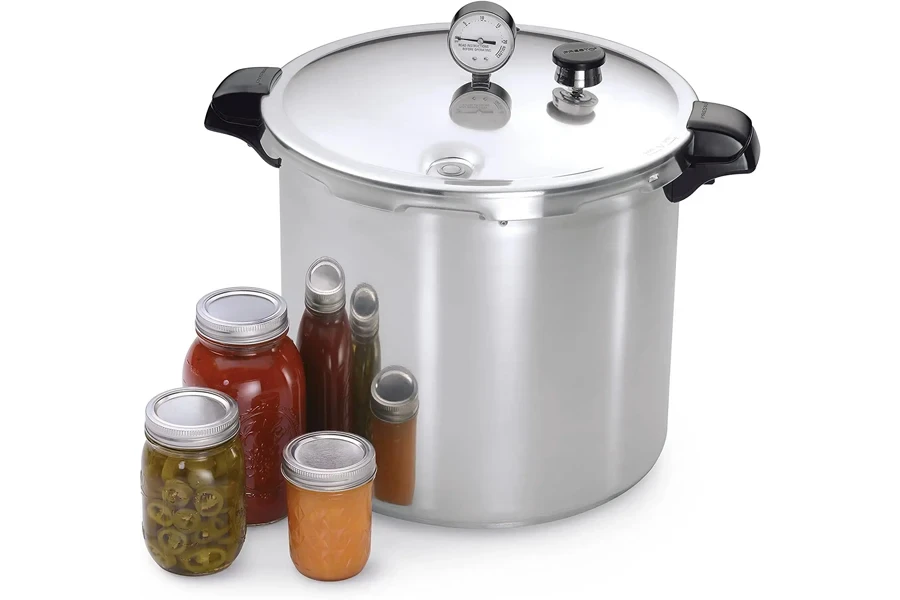
Pressure cooker sizes range from 1–2 liters to 4 quarts (Qt), perfect for single people or young couples.
Next is the 2–5 liter range, or 6 quarts, ideal for small three to four family members.
8-liter or 8-quart pressure cookers are suitable for groups of six people.
When these cooker capacities get to over 8 liters or 12 quarts, and more, they are appropriate for large groups of people or extensive food preparation activities like canning.
Stocking up on pressure cookers
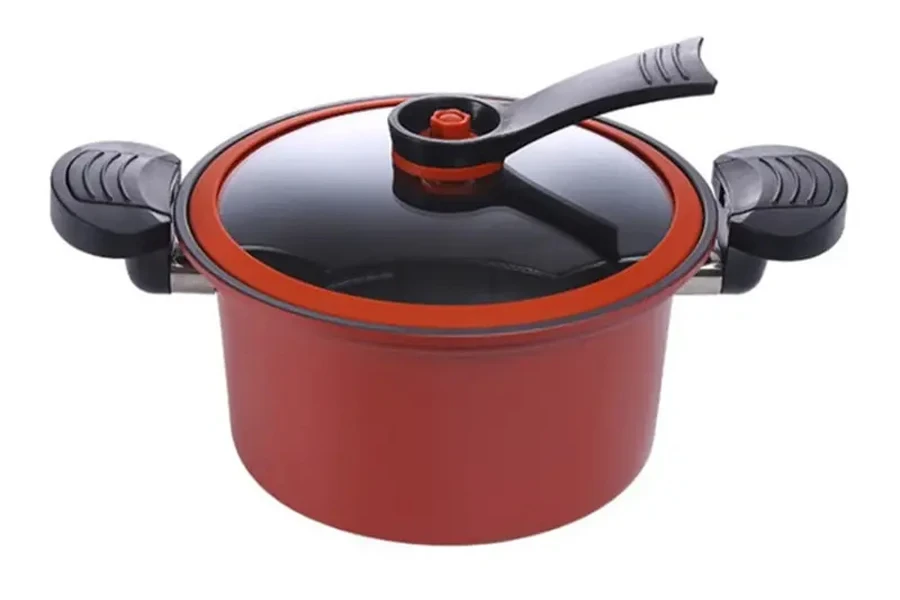
With the right information, it is simpler for retailers to order stovetop or digital pressure cookers that make a difference for their customers. But, besides the convenience of this article’s summary of study forecasts, retailers can explore the Alibaba.com website to view the variety of products to meet diverse market needs. Once researched, placing orders with the right vendors will add to a valuable shopping experience that can be shared with your own customers.




